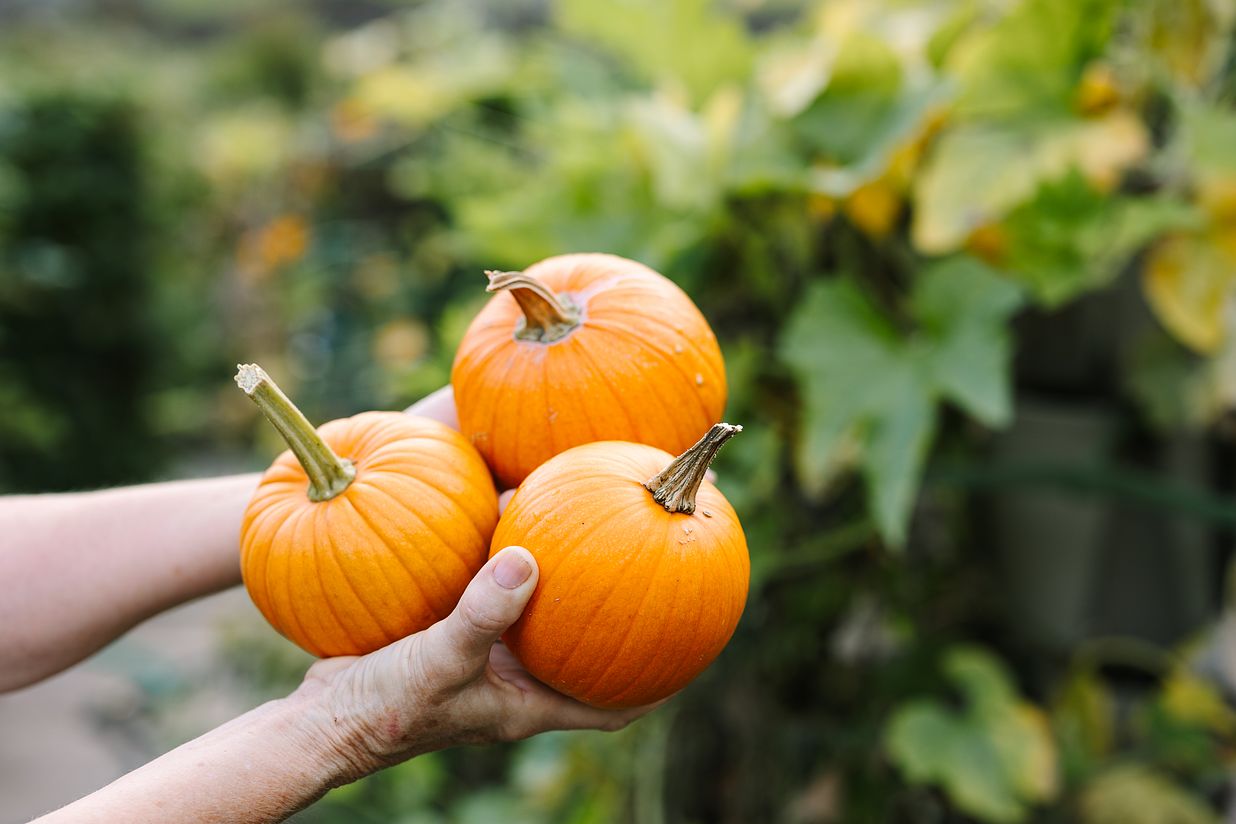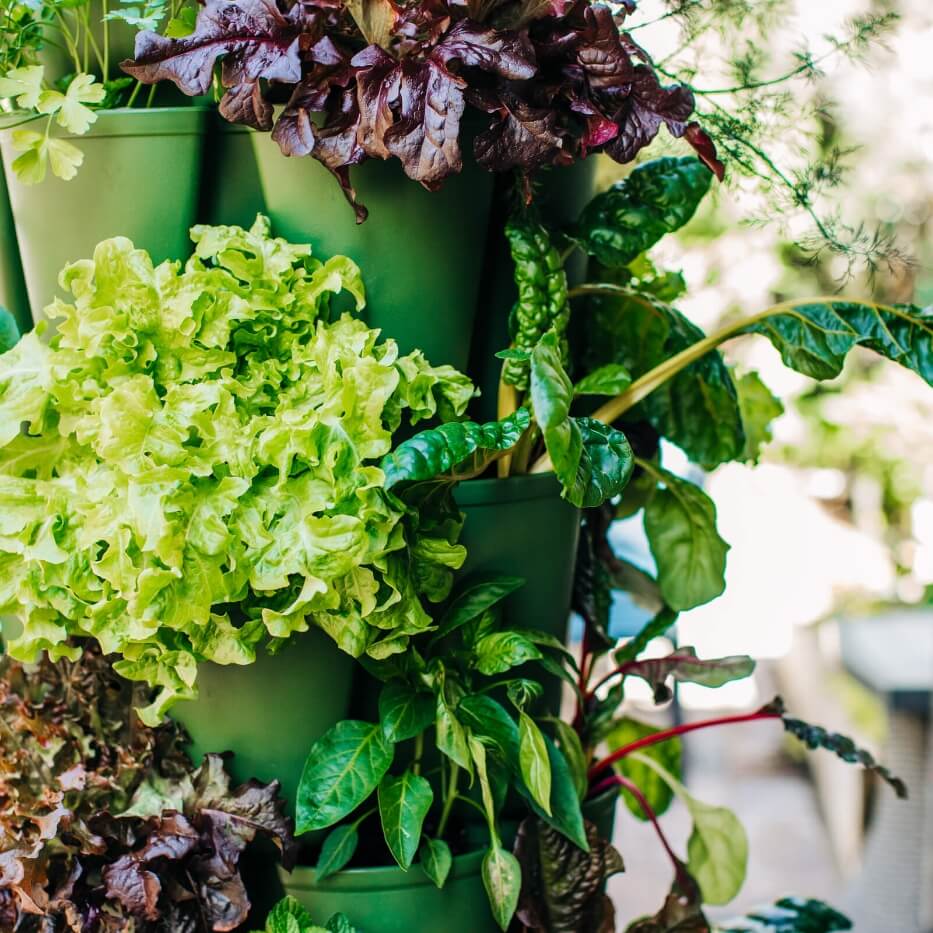
Winter Squash Fast Facts
Weather: Warm
Size: Large
Sun: 6-8 hours
Days til maturity: 55-65 days
Water: Consistent
Original or Leaf GreenStalk: Original
GreenStalk level: Place below smaller plants
Plant support needed? Yes
Butternut squash, spaghetti squash, turban, acorn, sweet dumpling — and OH the many types of pumpkins! Winter squash varieties are almost as numerous as the days until harvest. But don’t let the term “winter” confuse you. Winter squash is a warm-season crop that simply stores over the winter.
Planting and Growing
Fill each tier of your GreenStalk Original Vertical Planter with your favorite high-quality, lightweight potting soil. Winter squash seeds can be direct sown after all danger of frost has passed. However, most varieties need 85-120 days from seed to harvest. If you have a short growing season, you may want to start seeds indoors and plant out seedlings. Once planted, keep the soil consistently moist throughout the growing season. Try not to let it dry out between waterings because winter squash loves water! Once you see the first blooms, you can provide some water-soluble fertilizer, either through the water reservoir or directly to the pockets. Provide a full six to eight hours of sun.

Acorn squash and cucumbers growing vertically in the summer
Varieties
Bush varieties are a good choice for growing in a GreenStalk Vertical Planter, but you can certainly grow vining varieties. Some bush varieties to try are discus bush buttercup, bush delicata, table queen acorn, or honey bear acorn. Butterscotch is a delicious short-vine hybrid worth trying as well.
Spacing and Support
Even bush varieties can have a 3’-6’ spread so keep this in mind when planning your pockets. (Try out our free Plant Planner here!) Plant one per pocket but consider planting only two or three per tier, on opposite sides, to allow for foliage growth. In the other pockets, you could grow root vegetables or small flowers – any small plants that don’t require support.
For vining varieties, we recommend using the GreenStalk Plant Support. As the vines grow, wind them around the plant support, guiding them around your GreenStalk Vertical Planter. Or you could also use a soft strip of fabric or twine to tie the vines to the plant support. As the squash fruits grow and become heavy, you may want to support them by cradling them with a piece of nylon tied to the support.
A note on pruning
Though pruning isn’t necessary for winter squash, there are times you may want to break out the hand pruners. Bush varieties may grow thick and full, hiding blooms from necessary pollinators. You can thin out some of the foliage but take care not to cut back the main vine and avoid pruning more than ⅓ of the plant at a time.
As the plants mature, powdery mildew is a common problem. You can slow the process by trimming out small areas that are affected.

The GreenStalk Plant Support can help guide vining varieties around the planter.
Pests
Many of the pests that come for summer squash will also feast on your winter squash. Squash bugs, vine borers, and cucumber beetles to name a few. Stay diligent! Hand pick, spray off with strong streams of water, and use insecticidal soaps as necessary.
Harvest, Cure, and Store for Winter
As your winter squash plants mature, the foliage will die back, the fruits will turn to their rich, final color, and the rind will harden. Try the fingernail test – if you push a fingernail into the skin and it breaks into the soft flesh, it’s not ready. If it’s hard, it’s time to harvest and cure.
To cure winter squash, you could leave it on the vine, or move it to a warm, dry place for ten days to two weeks. If the humidity in your area is low, you could leave them to cure on a covered porch. They can double as fall decorations! (Note: Acorn, delicata, and spaghetti squash varieties do not require curing, so look up information on your particular variety.)
Once you’re ready to store your winter squash, first dip it in a diluted bleach solution of ten parts water to one part bleach. This will kill any bacteria or mold and prevent it from prematurely rotting the fruit. Dry thoroughly and move it to a cool place, ideally 40° to 50°F (4° to 10°C) with good air circulation. Most varieties will last through the whole winter!
If you grow winter squash in your GreenStalk Vertical Planter, let us know how it’s going! For more information about growing in your specific climate, check out your local extension office. We’re here to help you grow — just email us at support@greenstalkgarden.com.
Happy gardening!










